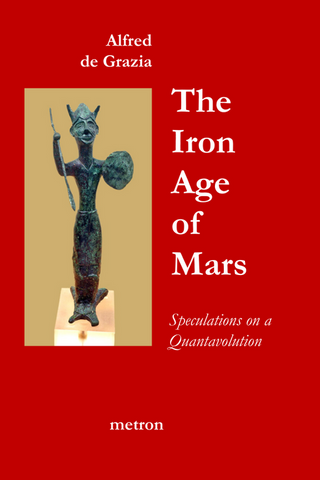The Iron Age of Mars

In this astonishing work, Alfred de Grazia discloses and analyzes the sudden, shattering and wholesale changes that rooted out the wonderful cultures at the end of the Bronze Age, ruined thousands of towns and reduced drastically their populations. There followed the terrible Iron Age, which only after centuries finally settled into the Classical Age and the Roman Empire. De Grazia details over fifty cases, some in considerable detail, of the destruction and recreation of famous places such as Troy, Athens, Thebes, Rome, Volsinium, Mycenae, Crete as well as Cyprus, Syria, Palestine, and ranges from the Caspian Sea to the Atlantic Ocean. He presents a startling portrait of the Planet-God Mars as the leading malefactor of the Age, with all its doppelgangers in various cultures.
Between the Late Bronze Age and the Iron Age comes what has been and still is called by many Classical scholars the Greek Dark Ages (or Dark Age), marking a dreadfully long passage between civilizations. My position has been and remains that the Dark Ages hardly existed, although they were even more dreadful than conceived. For they marked a holospheric change in the world, so much change in every sphere – astrosphere, geosphere, biosphere, historisphere, etc – that they altogether amounted to a quantavolution, which is defined as an immense event of wide scope, great intensity and stunning suddenness. It was a catastrophe; still, it carried with it the seeds of classical Greece and the Roman Empire, wonders of humanity to this day. Also, though I find the task difficult, I may be able to detect in Iron Age events the spores of Judaism, and therefore of Christianity and Islam. It is fairly possible, too, that Mars was forced to cast upon Earth millions of tons of iron, for which element the planet was anciently known.
